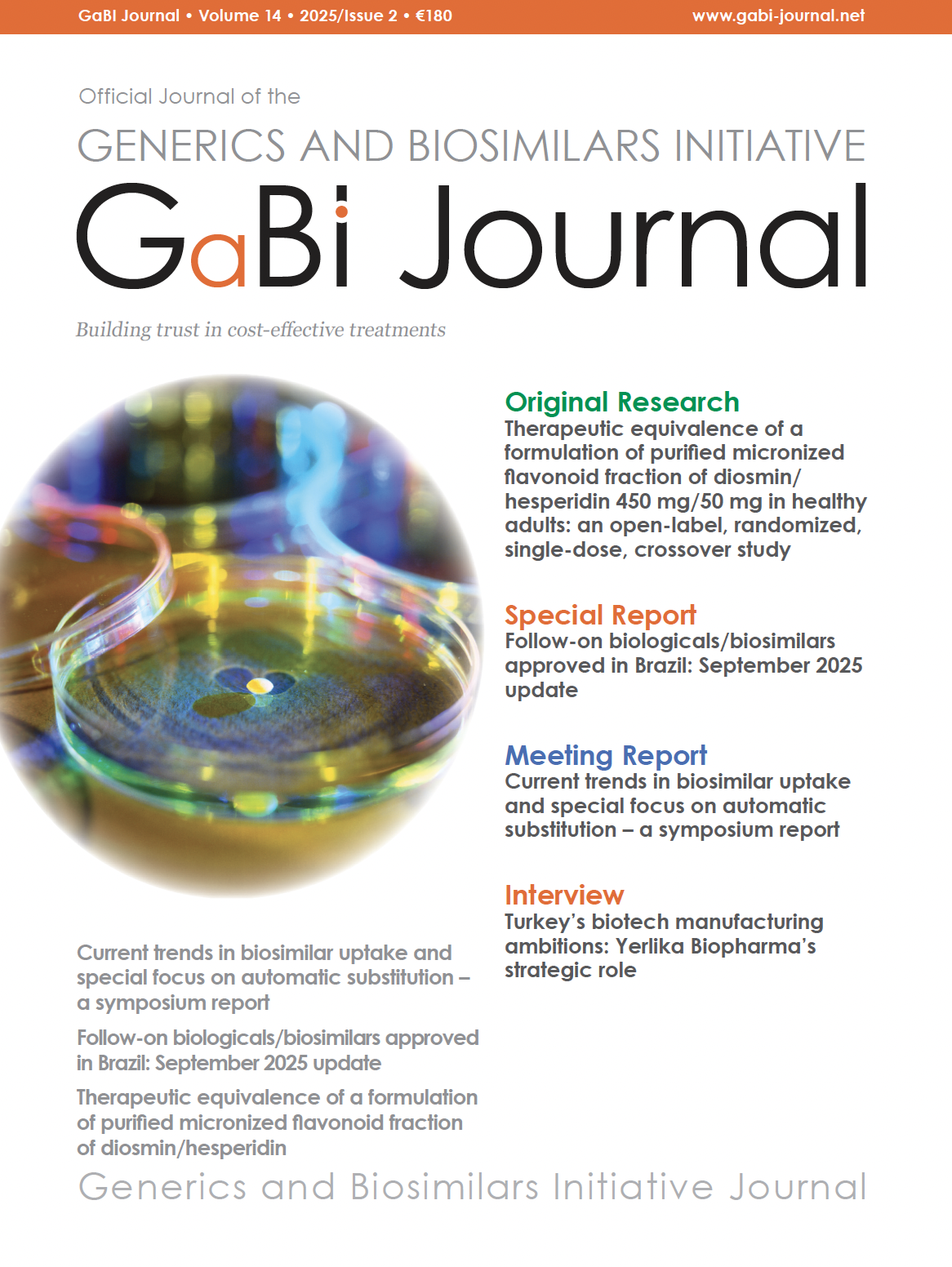Extrapolation requires reading between the lines
Published on 2023/09/14
Generics and Biosimilars Initiative Journal (GaBI Journal). 2023;12(2):39-40
The articles in this second issue of 2023 include an Original Research (Internet questionnaire) of the ‘opinions’ of Canadian ophthalmologists, a Review Article describing a statistical method to assess the ‘drift’ in the attributes of a reference, originator biological product, a Perspective (opinion) article questioning the value of ethnic sensitivity studies (ESS) in the evaluation of therapeutic monoclonal antibodies, and a Special Report that updates ‘follow-on biologic’ product approvals in Brazil.. While the article types and topics differ greatly, they all raise questions about the proper extrapolation of study results.
The first article (Original Research) describes the results of one of many very similar Internet questionnaire studies done by authors from the Alliance for Safe Biologic Medicines (ASBM). The article presents results from a study of a small (N = 41) number of Canadian ophthalmology ‘prescribers … asked for their views: on how products are identified; influence of the cost of biologicals and biosimilars when prescribing; prescribing biosimilars and switching to biosimilars; pharmacist-level switching to biosimilars and automatic substitution of biosimilar ophthalmology products’. Based on the results from these 41 subjects, the authors suggest that the results represent the attitudes of, ‘prescribing ophthalmology physicians in Canada’. They claim that the survey results indicate that Canadian ophthalmologists, ‘are confident in the Canadian pharmacovigilance system’s ability to accurately identify the specific product that might be responsible for an adverse drug reaction’, that, ‘Most physicians are not influenced by the cost when prescribing biologicals and … are confident prescribing biosimilars and switching patients to biosimilars where appropriate,’ ‘… 90% of practitioners think they should have the sole authority to decide what biological is dispensed …. over 80% are not comfortable with third-party switching for non-medical reasons’ and a… majority of practitioners preferred a system … inwhich multiple products, including innovator and biosimilars, are reimbursed, biosimilars are encouraged for new patients and there is no automatic substitution’.
I have commented previously on the many study design and interpretation limitations of such studies. There is no way to know how reliable the opinions expressed represent the views of all the other over 2,800 practicing ‘Canadian ophthalmologists’ or even how honestly these 41 participants who were willing to participate, answered all questions. Studies such as this can provide useful information but both authors and readers must be careful when deciding whether or how such data can be extrapolated beyond this small, selected population.
The second Review Article by Zheng et al. from Duke presents a method that they propose can identify when ‘drift’ in the characteristics of an innovator biological becomes significant. This is required to decide when the characteristics of the original batches of a biological product can no longer be used to assess whether a follow-on product can be considered biosimilar. The problem of when it is no longer possible to extrapolate between the characteristics of the original product to those of subsequent batches made by the innovator company is not trivial. We would welcome comments, studies, or other articles dealing with when and how biosimilar regulators should deal with this important issue.
The third Perspective article by Athalye et al. from Biocon Biologics Ltd, Karnataka, India claims that requirements for ethnic sensitivity studies (ESS) of monoclonal antibodies (mAbs), ‘should be reconsidered based on the available data on the reference drug rather than being a default obligation in biosimilar development of mAbs’. Based on their review of the mAbs characteristics and published studies, the authors even suggest, ‘Eliminating such a requirement could accelerate the development of biosimilar drugs while maintaining safety and efficacy standards, facilitating access to these life-saving therapies’.
However, the authors’ claim that ethnic differences in mAbs dosing requirements are unusual, ethnic differences that could have important implications for mAbs have been reported.
For example, there are ethnic differences in the binding of anti-malaria antibodies (Israelsson E, et al. Differences in Fc-gamma receptor IIa genotypes and IgG subclass pattern of anti-malarial antibodies between sympatric ethnic groups in Mali. Malar J. 2008;7:175. There are also differences in the antibody responses to vaccination, e.g. influenza vaccination. There are documented ethnic differences in response to at least one therapeutic antibody (Telesford KM, et al. Neuron-binding antibody responses are associated with Black ethnicity in multiple sclerosis during natalizumab treatment. Brain Communications. 2923;5(4):fcad218. Finally, examples of ethnically influenced differences in disposition of therapeutic monoclonal antibodies also exist, e.g. Thomas VA, et al. Understanding inter-individual variability in monoclonal antibody disposition. Antibodies. 2019;8(4):56.
The final article, a Special Report is an update of follow-on biological product approvals in Brazil. Readers should note that not all products listed are true ‘biosimilars’ (as pointed out in the editor’s comment at the end of the article) since, ‘ANVISA does not distinguish between real biosimilars, follow-on products, and innovator products’.
As these articles illustrate, authors and readers must always be careful when attempting to extrapolate from their data and published studies respectively; especially when suggesting changes should be made to regulatory processes that must be designed to avoid missing even unusual but clinically important population differences.
Professor Philip D Walson, MD
Editor-in-Chief, GaBI Journal
Disclosure of Conflict of Interest Statement is available upon request.
Copyright © 2023 Pro Pharma Communications International
Permission granted to reproduce for personal and non-commercial use only. All other reproduction, copy or reprinting of all or part of any ‘Content’ found on this website is strictly prohibited without the prior consent of the publisher. Contact the publisher to obtain permission before redistributing.


